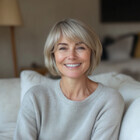The Aventurine stone throughout the world over the years
From prehistoric times, especially in Ethiopia, tools were made of aventurine. However, unlike other gemstones, it is strangely absent from mythologies and traditions.
However, this gem has been associated with many symbols throughout history:
More than 4000 years ago, for example, it symbolized spiritual knowledge for the Celts, while for the Chinese it was an imperial stone and bore the name "Yù". The latter associated it with the goddess Guanyin Pusa, who represented unconditional love and pity.
A few thousand of years later, Tibetans believed that wearing this mineral in the form of an amulet corrected problems with vision, especially nearsightedness. This is why their statues had green eyes, made of aventurine.
Then, approximately 2000 years before our era, the Incas used it to attract wealth. The aventurine stone had always had the virtue of attracting financial prosperity (that is why it pleases the Taurus). Thereafter, in the 1890s during the Klondike Gold Rush in North America and Canada, gold seekers used this mineral as a talisman to attract good fortune during their search.
Finally, in 19th century Russia, aventurine was used in the design of all kinds of decorative objects such as vases, candlesticks, table ornaments and jewelry.

In the Hermitage Museum of Saint Petersburg, we can find a surprising basin on foot made of aventurine. It is no less than 1.46 meters high and 2.46 meters wide. 
In London, at the British Museum, one can also admire a large vase carved from aventurine. Originally from Central Asia, it had been offered by Tsar Nicolas II to the head of the British Geological Survey.













 Aries
Aries  Taurus
Taurus  Gemini
Gemini  Cancer
Cancer  Leo
Leo  Virgo
Virgo  Libra
Libra  Scorpio
Scorpio  Sagittarius
Sagittarius  Capricorn
Capricorn  Aquarius
Aquarius  Pisces
Pisces 









Did you like this article?
Want to know more 🤔 ?
Write directly to the authorMadisonCarter !
Ask Madison a question
Want to share your thoughts? Leave a comment